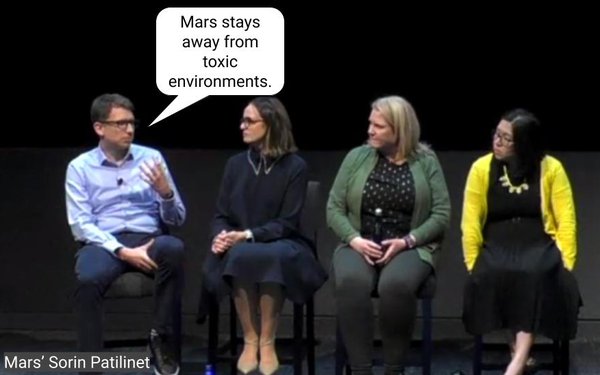Commentary
ARF Day 2: Regulation, Privacy, Toxicity And 'Impressions'
- by Tony Jarvis , Op-Ed Contributor, March 22, 2024

The second and final day of the Advertising Research Foundation’s (ARF) Audience X Science Conference in New York City built on the privacy and AI concerns and opportunities outlined by Claritas’ Rex Briggs on Day One.
Marketing Science Institute’s Ali Goli, in fact, presented “Unintended Consequences of Privacy Regulation & Data Loss,” based on a wide array of selected research studies that supported the various hypotheses.
The presentation was suitably crafted. Specifically, Goli posited that due to privacy regulations – and the resulting compliance costs and loss of data signals – the cost of marketing has risen significantly. He also revealed the degree to which consumer welfare is “harmed” through reduced search yield and higher un-targeted prices.
advertisement
advertisement
All very comforting ammunition for marketers vs. regulators, but for those that have suffered from well-documented lies, misinformation and targeting algorithms – notably via social media – where was the counterbalance?
Did Goli go too far when he appeared to downplay the effects of social media’s threats to elections and democracy in relation to privacy regulations recalling Facebooks’ description as “data pirates” by a U.K. Parliamentary Committee in 2018?
Did Mars Senior Director of Marketing Effectiveness Sorin Patilinet underline the privacy and regulatory concerns with media content and access to consumer data, when he stated his company’s marketing “stays away from toxic environments”?
Realeyes CEO Mihkel Jäätma and Vice President Scott Jones, and Kantar Profiles Chief Strategy Officer Nick Sutton, exquisitely raised the concern with the proportion of “fake respondents” to research surveys and the consequences for marketing insights and decisions.
Based on analysis of 500,000 surveys across providers, it is estimated that 30% are fake. However, AI and face verification offer the industry a frictionless, real-time, game-changing solution in combination with other technologies and controls that can work on any device, anywhere.
Surveys based on disengaged, dishonest, or fake panelists have little, if any, value.
It was encouraging to see that the ARF, ESOMAR, and the Insights Association are actively driving the incorporation of this technology-based quality initiative.
“The Attention Economy” makes us all think about eyes-on, or proven visual contact (“viewing) of ads by real people. It is an imperative metric because, “Ads have to be noticed to drive results,” per Lumen Research CEO Mike Follett.
But what about ears-on for audio? Could a persons-based ears-on (“heard”) be measured or at least imputed? Would audio content suffer the same significant reduction in the hierarchy of measured media metrics as other media?
Follet and Dentsu Global Head of Planning Joanne Leonge offered significant updates, confirming Lumen can now impute ears-on from its content exposure and outcomes models. They also found audio does not suffer the fall-off in the hierarchy of media metrics many other media have suffered.
Based on Lumen’s model, audio delivers remarkably high levels of ears-on – or audio attention – and consequently offers advertisers and their media agencies very compelling CPMs of attention that can be compared with other media based on the same common denominator.
Throughout the conference, the term “impressions” was used repeatedly. Based on a career in media, it was clear to me there were as many definitions and derivations of that term as the number of times speakers used it. So, next time you hear “impressions,” I suggest you ask what its definition and derivation are. You may be surprised by the answer.




In the media metrics hierarchy, remember that typically of 100 content impressions delivered (distribution/circulation), only ~70% - 50% are “viewable impressions”, aka content-rendered-counts (No REAL OTS!). For some media environments perhaps only ~15% - 25% of the “viewable impressions” are actually "viewed" (Eyes/Ears-On or attention) and generate a "contact" often with short view times depending on the medium, the media vehicle and the environment. Per Mike Follett, it is only the Eye/Ears-On or attention measure that will drive any outcomes. As suggested by Dentsu & Lumens, attention CPMs - aCPM's - are a crucial dimension for planning, buying and selling.
The seller's teror of smaller numbers ---which is all to evident in this round of "improving" our national TV rating methodologies-----makes me laugh. By nixing attentiveness the TV sellers think---like all sales people---that they are protecting their ad revenues--for, if advertisers knew that only a third of their "impressions" actually represented someone watching a coimmercial this might prompt them to abandon TV. Right?
Actually, the opposite is probably the case. TV advertisers are wedded to "TV" as their primary communications medium. They aren't going to dump "TV" in favor or radio or print display ads. They have nowhere to go--except where they can tell their stories via "TV" commercials.
A typical "TV" advertiser of a reasonable size---budget-wise---reaches about 55-60% of its target group per month and more---75-80%---over longer periods with "TV"--- that's using the current, inflated numbers. And a brand with, say, a 60% monthly "TV" reach and an average frequency of 4-5 thinks that's OK for a typical four-week period. But what if that brand suddenly found out that its real monthly ad reach is a mere 45% and its average frequency---people looking at its ad message----was 2.0---what then? In my opinion, once the shock wore off the brand would probably consider increasing its "TV" ad spend, not reducing it. And its CMO mught even start banging on the media agency that buys its "TV" time to press for attentiveness to become a standard part of Nielsen's new big data plus people meter VPS service.
But, not to worry, folks. We are going to get big numbers from big data and advertisers will continue to wonder why their "TV" ad dollars aren't preoducing the kinds of results that they once did. Assuming that they even think about such things. Sigh!